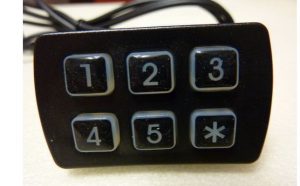
At least, that is what I had always thought until one day when the proprietors and employees of my favorite place to purchase anything from plumbing fixtures to concrete-grade sand provided me with a very pleasant surprise.
I was in the midst of searching for just the right pieces to construct a temporary Pesach-kitchen (yes, it is possible to build such a thing, and it isn’t as complicated as you might think; perhaps I’ll write an article about that one day…) when I suddenly noticed the owner of the store gathering his employees to daven Mincha.
Now, that may not seem like such a novelty to those who work in religious environments, but this store has always struck me as anything but. Although I always enjoyed the store because of its wide selection and competitive prices, in the spiritual department I had always felt that, well, there was much to be desired. So, when I saw all the bare heads being covered by yarmulkas, and a genuine Mincha taking form – at the behest of the owner himself! – I was, suffice it to say, quite taken by surprise. I truly felt it an honor to be the tenth man of that particular minyan.
My next experience davening Mincha in the Bet Shemesh industrial area, though, is what really inspired me. Pesach having concluded a few days prior, I was there to purchase some feed the two Norwegian dwarf goats that we were housing in our yard at the time (Norwegian dwarfs are very high on the cute-factor and their bleats sound uncannily like a crying baby, but, no, we don’t live on a farm; we just had them for a couple of months for the experience).
At one point, my car’s code-pad (in Israel, for many cars you have to punch in a four-digit code in order to turn on the ignition) had turned 
Well, as it turned out, I apparently needed a kapparah of the embarrassment variety, because Naftali punched in my code and it worked right away. I had pressed the buttons in the wrong order too many times, and all that was necessary was to wait a few minutes until the codan reset itself. I offered to pay Naftali for his trouble, but he – despite his bare head – retorted with classic Israeli dismissal, “lo tzarich” (there’s no need).
To say that I was impressed is an understatement. It’s not like I pulled up into his shop and he just had to take a few seconds of his time to punch in the right numbers and show me how inept I am (you’re probably wondering: “and this guy built a temporary Pesach kitchen?!”, but there are greater mysteries of the universe than that). My car was stuck down the road. He had to leave his shop, and drive himself and me to my car. He waived a service charge that he by all rights deserved.

I immediately came to the conclusion – in the quiet privacy of my mind of course – that he must have just meant the little corner that they use for davening every day.
But as I alighted the stairs and entered the enclosed area, I was floored. Albeit small, the room was well-appointed to resemble a real-life Sefardic style Beit Knesset. Upon further reflection, I realized that this was not just a resemblance. It really was an honest-to-goodness Beit Knesset. Right in the corner of this most forlorn and rundown of car garages!
The walls were decorated with modim posters and the like, the floor was a very nice-looking, imitation wood. A proper shtender was there to serve the chazzan that looked as good as any Shul lectern.
There were even curtains on the windows!
So, amazed was I by what I was seeing – like an oasis in the middle of a barren desert – that I photographed it. To my great consternation, though, the shop owner – who doubled as chazzan – refused to allow me to publicize it. “No, no,” he said when I requested permission, “we don’t want any publicity. We are simple people who like to keep a low profile.”
A pashuter Yid, as the expression goes in Yiddish. But, then again, I am starting to think that maybe there really is no such thing as a simple Jew…
Check out my most recent book, “Help! My son is growing up. What should I say?! – How to teach your son the Torah’s values on sexuality”


